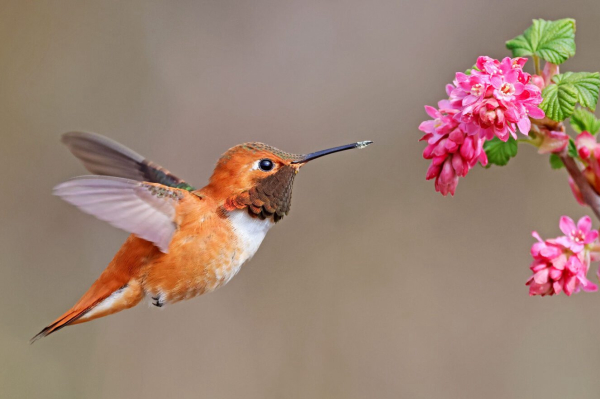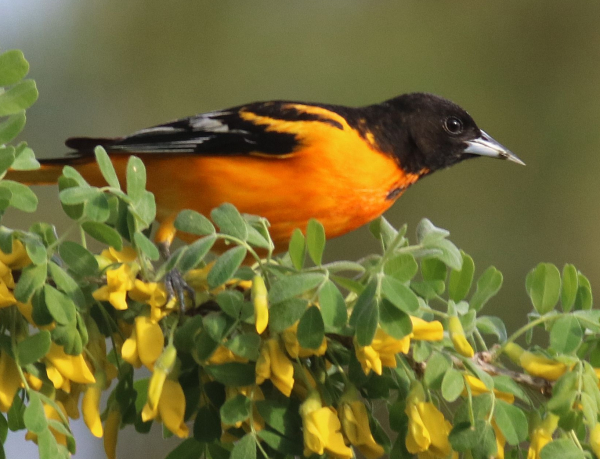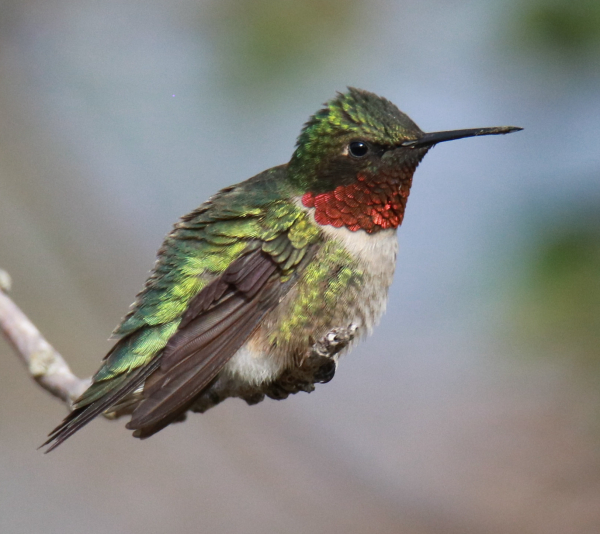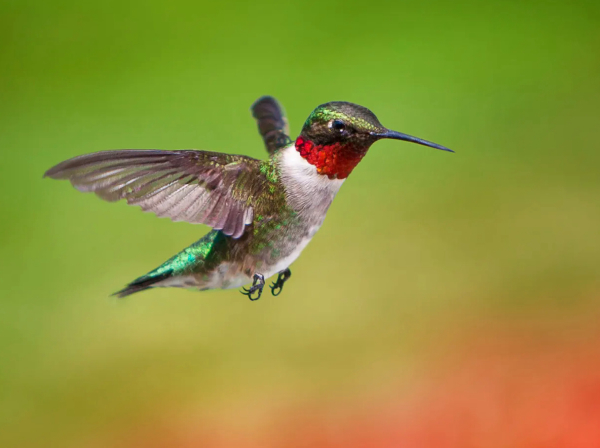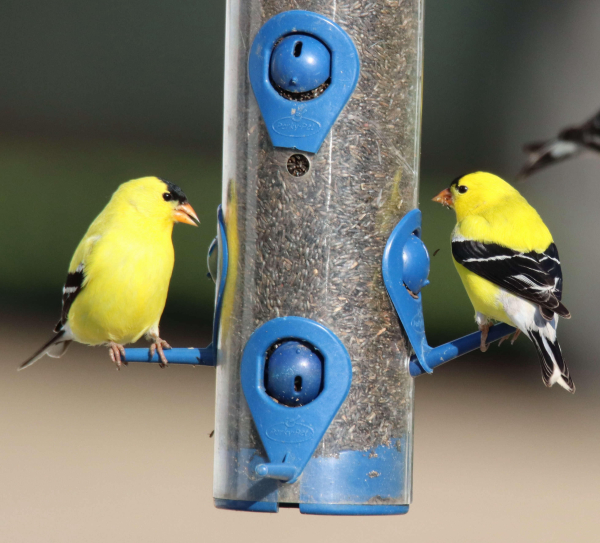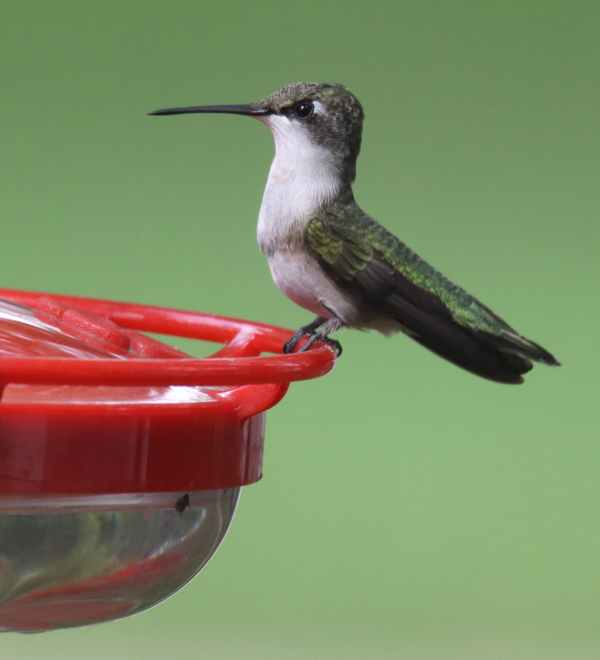Seasonal Transitions are Happening
Article and Photos by Paul Konrad
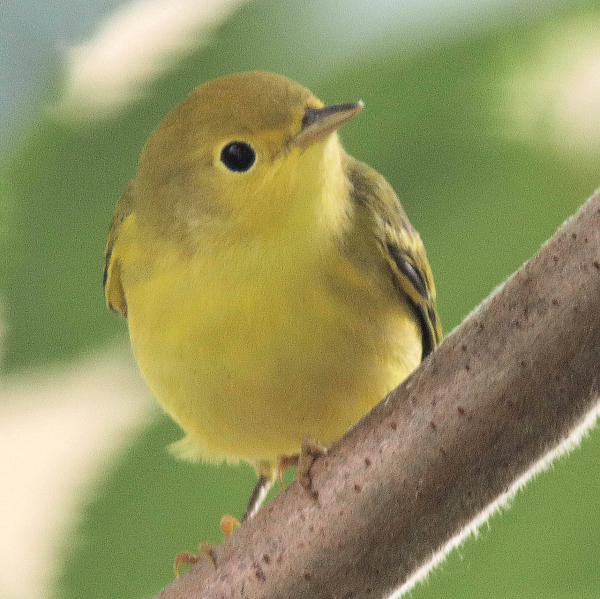
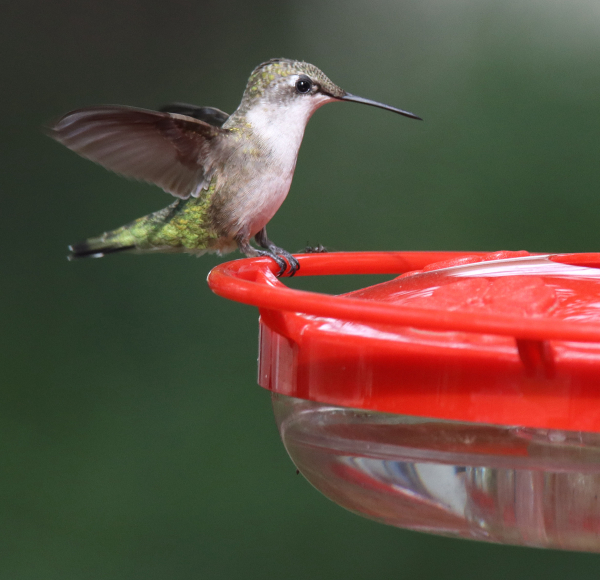
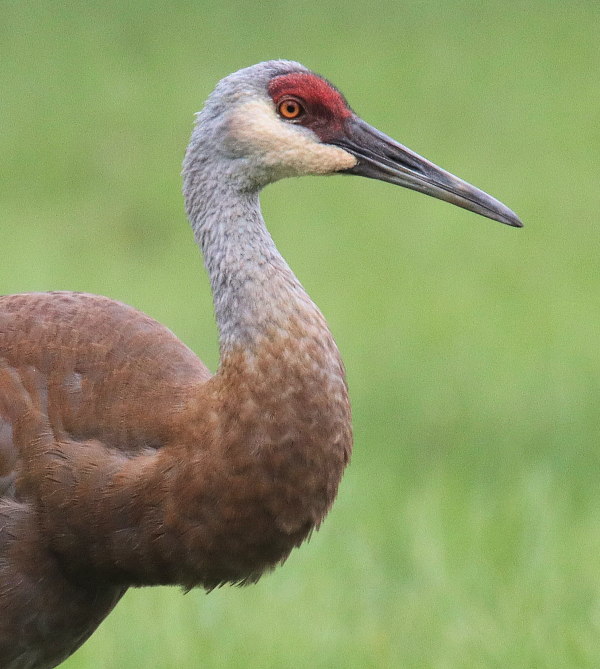
The female of a pair of Sandhill Cranes that has been adopted a suburban Minneapolis neighborhood, occasionally visiting front yards and centering at an adjacent open area with a shallow wetland.
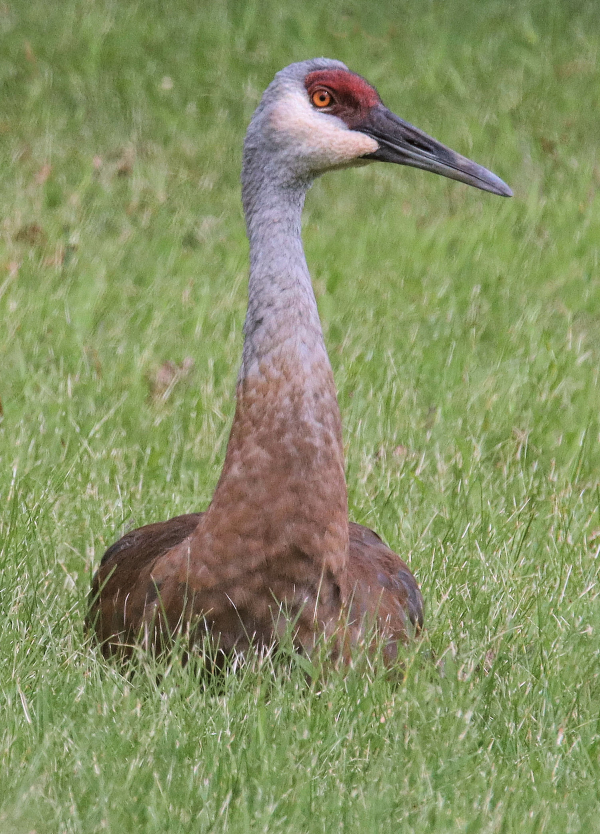
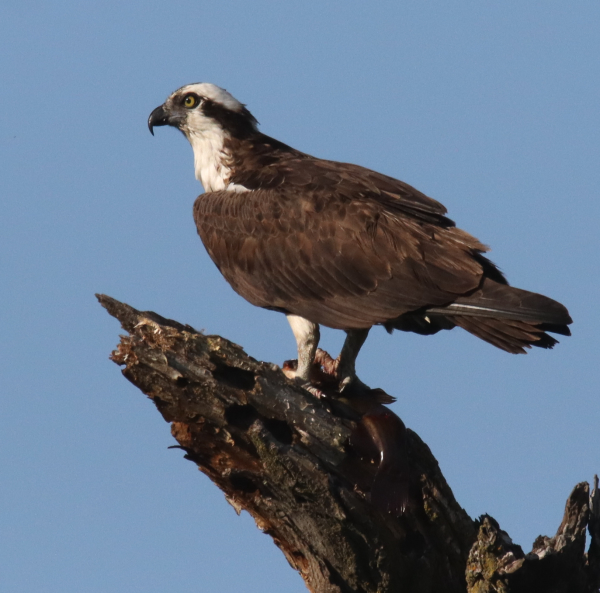
Part of the fun of attracting birds to our yards is developing an attractive “habitat” through birdscaping with trees, shrubs, flower gardens, decorative grasses, as well as stocking a feeding station with a variety of seasonal foods and a source of fresh water. Now, it’s a time of the year when we look forward to the return of early fall migrants, hopefully with some surprises among them, although the first birds of a given species always bring a level of excitement too. When our editor described his recent yard sightings, we asked him to expand on his recent backyard experiences.
Paul wrote: The first hummingbird since spring migration was front page news this week, when I spied a female or young Ruby-throated Hummingbird zipping over my feeding station and hovering in front of one of my bay windows as if to let me know the vanguard had arrived. More likely it was checking for small insects along the interplay of wood and glass along the line of windows, but after returning from an evening birding drive, that bird or another hummer perched on my feeder for fresh sugar-water nectar. I’ve been waiting for dispersing hummingbirds to arrive for a month so this was a most welcome sighting.
In the past I’ve had hummingbirds from the beginning of spring migration to the end of fall hummer migration, but not this year or last. But the good news is they are back, and although that initial hummingbird high didn’t last long – Saturday it was pretty clear the first fall Ruby-throat had moved on – but late afternoon Sunday I saw a hummingbird make a quick appearance at the salvia blooms. I grabbed my camera but it already vanished, however I’m determined to add to my file of hummingbird photographs during coming days and weeks.
Between the 2 hummingbird days, new migrants appeared outside my by windows Saturday at noon – a loose flock of young Yellow Warblers! I had a feeling there was a migration overnight, so watched out of the corner of my eye as I worked on this issue, and it paid off when the first of several young Yellow Warblers worked leaves for caterpillars just above my feeding station and along the edge of the sumacs. At that point I grabbed my camera and took a position to try for a couple window photos.
That’s when a colorful male American Goldfinch dropped down to my flowering potted sunflower plant – the first goldfinch I’ve seen check out the big yellow sunflower with several flowers advertising its position adjacent to my feeding station. And the young Yellow Warblers continued to work the sumacs, moving to ash trees in my front yard too. Excited by the flurry of birds, I watched for more, only to be rewarded before 1pm Tuesday, when another small flock of young Yellow Warblers copied the action of the previous flock, 3 days apart. And a couple more young Yellow Warblers followed 2 hours later.
The Gray Catbird (or catbirds) and a few House Finches are the lone visitors to my all but abandoned feeding station, but it’s stocked with a diversity of foods and fresh water, ready when dispersing or migrating birds arrive. How can they resist the buffet of sugar-water nectar, grape jelly, sliced oranges, no-melt suet, and a mix of thistle seeds and shelled black oil sunflower seeds. The paucity of feeder visitors hasn’t alarmed me, as there are always seasonal ebbs and flows in species and individual birds. Then, as I was putting the finishing touches on this article Tuesday afternoon, I spied a Ruby-throated Hummingbird flying to my red petunias, then to my nectar feeder where it drank from a couple different feeder ports, and then it was off again – zoom, zoom.
Oh, did I mention my many flowering plants – large planted pots of salvias, petunias, and sunflowers. And my birdscaping includes sources of berries in the form of wild grapes and chokecherries, lots of native seed options, insect foraging areas that range from deciduous and coniferous trees, fern gardens, flower gardens, stands of tall grass that have seed heads now, sections of mowed grass, plus beautiful blue sky. How can any birds resist?
Minneapolis Burbs
Two weeks ago I reported in the Backyard Birding article about the pair of Sandhill Cranes that have been visiting my new nephew Anders, at his parent’s Katy and Jeff’s home in a suburb north of Minneapolis. Last week was my best chance to visit little Anders (and Jeff and Katy, of course), and as I approached their house I was on the alert for Sandhills. After checking the now vacant Osprey nest at the end of the road leading to their home, I noticed a gray mound in low grass adjacent to a wetland – a sleeping crane; no, 2 Sandhills lying low.
One stood up after I passed by, so I parked my car and approached to a vantage point on foot, hoping for a few documentary photos as one of the cranes began foraging and the other watched with its head raised while still lying low. Musta been nap time in the neighborhood. I felt a little bad that I was birding before checking in on Anders, but in moments we had a nice introduction with Katy on their front patio, enjoying the perfect afternoon weather as we talked behind the sounds of Red-bellied Woodpeckers, Blue Jays, White-breasted Nuthatches, and Mourning Doves.
Katy and Jeff’s backyard has a small pond shared with neighboring yards that attracts Mallards and Wood Ducks and fosters Mallard broods, and their canopy trees attract the above-named birds along with Black-capped Chickadees, Downy and Hairy Woodpeckers, American Robins, House Wrens, and many more species. Among a variety of flowering plants, Katy also planted and has nurtured at least a dozen tall sunflower plants that were just forming their large flower and seed heads.
When Katy took Anders inside for a short nap, I checked back on the Sandhills down the street. It turned out the cranes were actually headed our way, and as they walked within a few feet of me, I tried to get a photo as the passed into the adjacent yard and crossed the street, but they were actually too close and moving too quickly. The cranes foraged across a few front yards and settled into the yard 3 houses down from Jeff and Katy’s yard to preen and rest again for an extended period.
After dinner I bid goodbye to little Anders and his dear parents, and managed a couple final photos of the cranes as I was leaving, along with a photo of an Osprey as it finished eating on a nearby snag. These are clearly not your regular suburban backyard birds, but it’s ultimately the surrounding habitat and a sense of safety that keeps them in the area, and they must be finding ample foods or they would move on.
There are many ways to enjoy and attract birds in our yards, neighborhoods, and other locations we visit. Actually, one of the great things about birds is that they can be found almost anywhere we go – any yard and neighborhood, and far afield – the species, variety, and abundance changes, as do the birds with the changing seasons. Embrace the opportunity to freshen up your yard, make sure your feeding station is in tip-top condition, and share your enthusiasm for the birds you attract and see. There’s a change a happening, starting from north to south, so be especially alert for new sightings and new experiences week by week, and enjoy all the birds you see.
Share your backyard birding experiences and photos with The Birding Wire at editorstbw2@gmail.com

